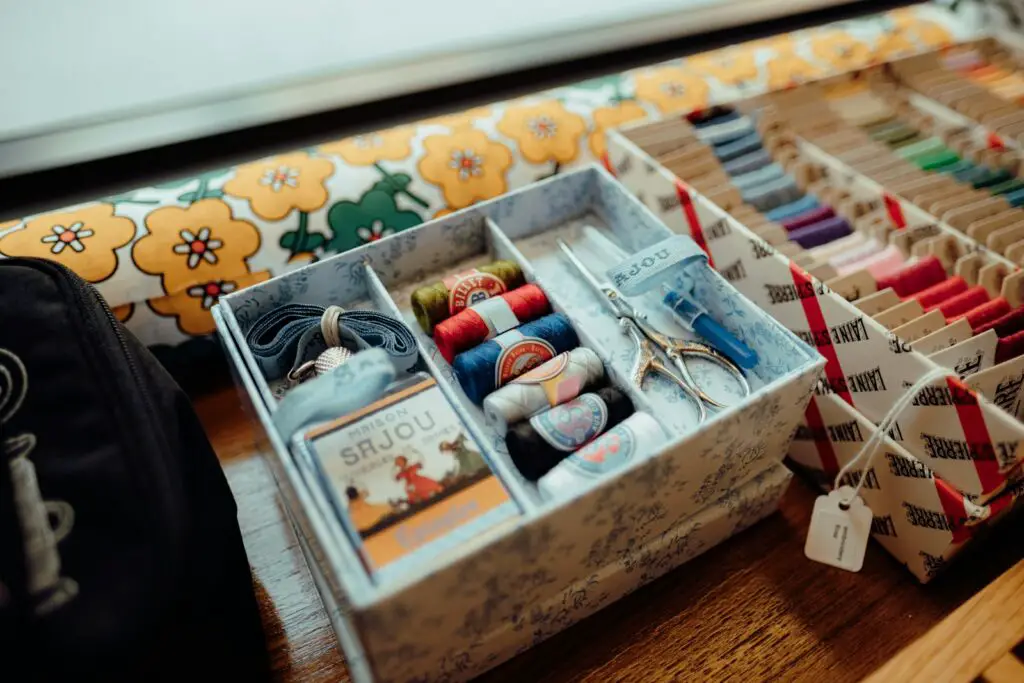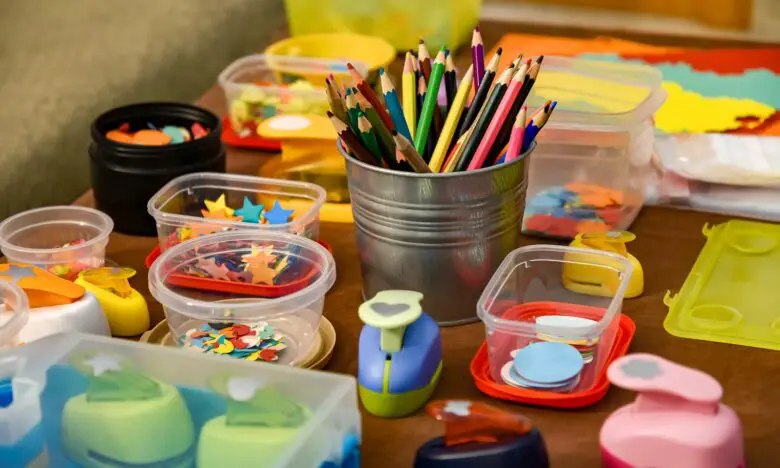Did you know that the global crafts market is valued at over $100 billion annually? If you’re passionate about crafting and want to turn your hobby into a profitable venture, this blog post is for you. Learn how to make and sell crafts successfully, turning your creativity into a lucrative business. Discover tips on product selection, pricing strategies, online platforms, and marketing techniques to help you thrive in the competitive crafts market. Get ready to unleash your artistic skills and make a mark in the world of handmade goods.
Key Takeaways
- Start your crafting business by understanding the basics of running a craft business, including legal requirements and financial planning.
- Choose crafts that have a high profit margin by researching market trends and customer preferences.
- Stock up on essential supplies for crafting to ensure smooth production and quality products.
- Explore various online selling platforms like Etsy, Amazon Handmade, or Shopify to reach a wider audience.
- Implement effective pricing strategies to maximize profits while staying competitive in the market.
- Promote your crafts by attending craft fairs, collaborating with influencers, or offering discounts.

Crafting Business Basics
Niche Market
Identify your niche market by focusing on specific items like handmade jewelry, home decor, or personalized gifts. Tailoring your crafts to a particular audience can help you stand out.
Budget and Pricing Strategy
When starting your crafting business, establish a clear budget for materials, marketing, and other expenses. Develop a pricing strategy that covers costs while remaining competitive in the market.
Legal Registration
Registering your business legally ensures its legitimacy. This step involves choosing a business structure (sole proprietorship, LLC, etc.), obtaining necessary permits, and registering for taxes.
Selecting Profitable Crafts
Research Trends
Researching trending craft items is crucial to stay ahead in the market. Look for popular themes like eco-friendly products or personalized gifts.
Consider browsing online marketplaces, social media platforms, and craft fairs to identify what crafts are currently in demand. Analyze customer reviews and engagement to gauge interest levels accurately.
Cost Analysis
Considering the cost of materials versus potential selling price is essential for maximizing profits. Calculate the expenses for raw materials, tools, packaging, and labor.
Ensure that the selling price covers all these costs while still providing a reasonable profit margin. Opt for crafts that balance material cost and selling price well.
Market Demand Evaluation
Evaluate the market demand for different craft categories to target the right audience. Identify niche markets with high demand but low competition.
Understand consumer preferences and buying behaviors to tailor your craft selection accordingly. For example, if there is a growing interest in sustainable products, focus on creating environmentally friendly crafts.

Essential Supplies for Crafting
Basic Tools
Crafting requires basic tools such as scissors, glue, rulers, and cutting mats for precision and accuracy. These tools are essential for a wide range of crafts, such as paper crafting, sewing, and jewelry making.
Invest in quality materials to elevate the standard of your crafts. High-quality materials not only enhance the appearance of your products but also increase their durability and overall appeal to customers. Consider using premium fabrics, papers, beads, and paints for a professional finish.
Eco-Friendly Options
Eco-friendly supplies are becoming increasingly popular among environmentally-conscious crafters. To reduce your environmental impact, opt for recycled paper, organic fabrics, natural dyes, and sustainable packaging. Embracing eco-friendly options can attract a niche market of customers who value sustainability.
- Use recycled materials whenever possible.
- Consider biodegradable packaging solutions.
- Explore sustainable alternatives like bamboo or cork materials.
Crafting is not just about creativity; it’s also about using the right supplies to effectively bring your ideas to life. By investing in essential tools and quality materials and considering eco-friendly options, you can create unique crafts that stand out in the market.
Online Selling Platforms Overview
Popular Marketplaces
Consider platforms like Etsy, Amazon Handmade, and eBay when selling crafts online. Each has unique features: Etsy focuses on handmade goods, Amazon Handmade offers a vast customer base, and eBay allows for auctions.
Fee Structures and Payments
Etsy charges a $0.20 listing fee per item for four months, along with a 5% transaction fee. Amazon Handmade applies a 15% referral fee on each sale. eBay has various listing fees based on the item’s starting price.
Payment Methods
These platforms offer diverse payment methods such as credit/debit cards, PayPal, and direct bank transfers. Providing multiple payment options can attract more customers and streamline transactions.
Analytics Tools
Utilize built-in analytics tools provided by these platforms to track sales performance. Monitor metrics like views, favorites, and conversions to understand your customers’ preferences better.
Pricing Strategies for Profit
Accurate Cost Calculation
Crafters should meticulously calculate all expenses, including materials, labor, packaging, and shipping, to set competitive prices. By understanding the cost breakdown, they can ensure profitability while remaining attractive to potential buyers.
Crafters often overlook hidden costs like transaction fees and platform commissions. These additional expenses can significantly impact the final pricing strategy. By factoring in all costs, crafters can establish a solid foundation for pricing their products competitively in the market.
Dynamic Pricing Adaptation
Crafters should adopt dynamic pricing strategies that adjust based on demand fluctuations and seasonality. During peak seasons or when certain products are trending, crafters can slightly increase prices to capitalize on higher demand. Conversely, during slower periods, they can offer promotions to stimulate sales.
Crafters must stay vigilant and monitor market trends and competitor pricing to make timely adjustments. By leveraging data analytics tools available on online selling platforms, crafters can optimize their pricing strategies for maximum profitability.
Bundled Deals and Bulk Discounts
Crafters can offer bundled deals or discounts for bulk orders to incentivize customers to make larger purchases. This strategy not only encourages customers to buy more but also helps crafters move inventory quickly.
Effective Craft Promotion Techniques
Visual Appeal
Create visually appealing product photos to attract customers. High-quality images can showcase your crafts effectively.
Collaborate with Influencers Partner with influencers or bloggers in the crafting niche. Their endorsement can introduce your products to a wider audience.
Engage Customers
Host Giveaways Organize giveaways or contests to engage and excite your customers. This can increase brand visibility and customer interaction.

Utilizing Social Media for Sales
Content Calendar
Crafting a content calendar is crucial for maintaining a consistent online presence. Plan and schedule your posts in advance to ensure regular updates. This will help keep your audience engaged and informed about your latest creations.
Engaging with Followers
Interacting with your audience is key to building a loyal customer base. Conduct polls to gather feedback on potential products or design ideas. Host Q&A sessions to answer queries and provide insights into your crafting process. This personal touch can foster stronger connections with customers.
Targeted Ads
Harness the power of targeted ads on social media platforms to reach specific audience segments. By defining parameters such as age, location, interests, and behaviors, you can tailor your ads to resonate with potential buyers. This approach increases the likelihood of converting views into sales.
Expanding Through Alternative Channels
Local Markets
Consider selling your crafts at local craft fairs or markets to reach a broader audience. These events provide customer interaction, valuable feedback, and potential wholesale opportunities.
Partnering with Stores
Collaborating with brick-and-mortar stores can help expand your reach and establish credibility. By showcasing your crafts in physical retail spaces, you can attract customers who prefer in-person shopping experiences.
Crafting Workshops and Tutorials
Launching crafting workshops or online tutorials can generate additional revenue streams while showcasing your expertise. These platforms generate income and help build a community around your craft.
- Pros of Selling at Local Markets:
- Direct customer interaction.
- Opportunities for feedback and networking.
- Benefits of Partnering with Stores:
- Increased visibility and credibility.
- Access to a wider customer base.
Summary
Crafting a successful business from your passion for crafting requires a strategic approach. By understanding the basics, selecting profitable crafts, acquiring essential supplies, effectively utilizing online platforms, implementing smart pricing strategies, promoting your crafts efficiently, leveraging social media for sales, and exploring alternative channels for expansion, you are on the right path to turning your hobby into a thriving venture. Remember, consistency and dedication are key in this journey towards entrepreneurial success.
Armed with the knowledge and tools outlined in this guide, take actionable steps to build your crafting business. Start by applying these strategies one by one, adapting them to suit your unique style and offerings. With perseverance and a customer-centric mindset, you can transform your love for crafting into a lucrative and fulfilling business venture.
Make and Sell Crafts Frequently Asked Questions
How can I start a crafting business?
To start a crafting business, you need to decide on the type of crafts you want to make and sell. Then, you need to research profitable crafts, gather essential supplies, set up an online selling platform, determine pricing strategies, promote your crafts effectively, and utilize social media for sales.
What are some effective craft promotion techniques?
Effective craft promotion techniques include participating in craft fairs and markets, collaborating with influencers or bloggers in the crafting niche, offering discounts or promotions for new customers, hosting workshops or tutorials related to your crafts, and utilizing email marketing campaigns to reach potential customers.
How do I select profitable crafts to sell?
To select profitable crafts to sell, consider factors such as current market trends, target audience preferences, competition analysis, cost of materials versus selling price, uniqueness of your crafts, and demand for specific types of crafts. Conduct thorough research before deciding on which crafts to focus on.
Which online selling platforms should I consider for my crafting business?
Popular online selling platforms for crafters include Etsy, Amazon Handmade, eBay, Shopify (for creating your own online store), and social media platforms like Instagram and Facebook Marketplace. To maximize sales opportunities, choose platforms that align with your target audience’s demographics and preferences.
What are some essential supplies needed for crafting?
Essential supplies for crafting may vary depending on the type of crafts you create but generally include basic tools like scissors, glue guns, and cutting mats; materials such as yarn, beads, and fabric; packaging supplies like boxes or bags; storage containers; and safety equipment like gloves or goggles. Invest in quality supplies for better results.















Leave a Reply